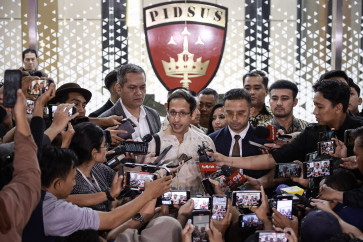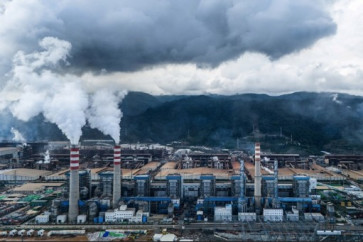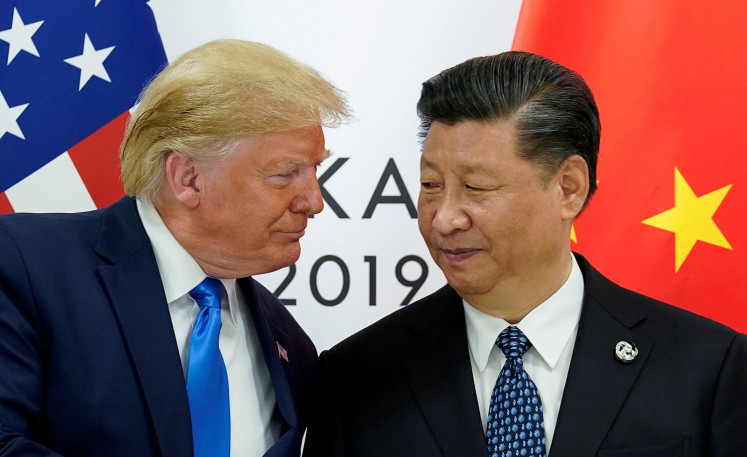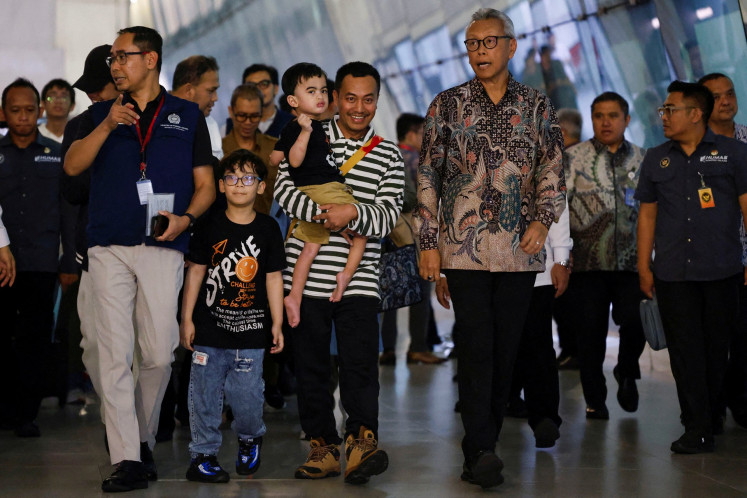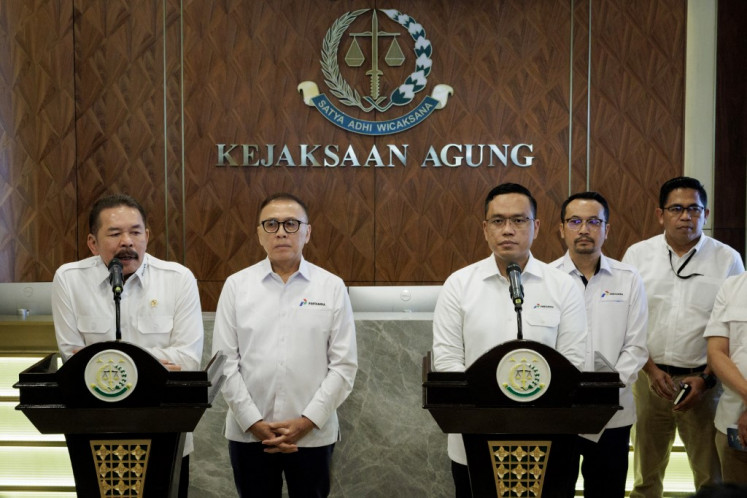Popular Reads
Top Results
Can't find what you're looking for?
View all search resultsPopular Reads
Top Results
Can't find what you're looking for?
View all search resultsExecutive Column: We go beyond main cities in Indonesia: Here Technologies
Stanimira KolevaYou may not have direct knowledge of 3D mapping company Here Technologies, but if you drive a smart car, the chances are that it is embedded with sophisticated maps built by this Amsterdam-based tech firm
Change text size
Gift Premium Articles
to Anyone

Stanimira Koleva
You may not have direct knowledge of 3D mapping company Here Technologies, but if you drive a smart car, the chances are that it is embedded with sophisticated maps built by this Amsterdam-based tech firm. A global leader in mapping and location services, Here Technologies is working to provide high-definition 3D maps that will be crucial for autonomous vehicles to be able to navigate roads safely. Yet, as the autonomous vehicle project has hit speed bumps worldwide, Here Technologies is switching gear to deploy its 3D mapping technology for more practical purposes like helping to manage smart cities and bringing more efficiency to last-mile delivery.
Last year, Japanese firm Mitsubishi and telecom giant NTT acquired a 30 percent stake in Here, hoping to harness the company’s strength to reduce traffic and improve efficiency. Following the deal, the two Japanese firms will become major investors, alongside BMW, Daimler and Audi, as well as parts makers Bosch and Continental. On invitation from Here Technologies, The Jakarta Post’s M. Taufiqurrahman joined the presentation of some of its new innovations at the Consumer Electronics Show in Las Vegas, in the United States, earlier in January and talked with Stanimira Koleva, the company’s senior vice president and general manager of Asia Pacific. Below are excerpts from the interview.
Question: What are the areas of growth in Asia?
Answer: For the first time, we’re seeing technology and geo-services merging together. The legacy of our business is just having a map. But we’re now much more than that map, we are more than navigation and how to find your way. We can also help transportation and logistics, last-mile delivery and real estate management.
On the back of it, we’re investing heavily in both extending coverage in rural areas and making sure we have the best granularity from a geo-coverage point of view. Indonesia is one of countries where we’re investing heavily to extend beyond the main cities and go to more provincial areas and the partnership that we have with the likes of Mitsubishi and NTT, which have invested a lot in business in Southeast Asia, is to create new capabilities around transportation and logistics, fleet management, optimization of routes, better coverage for the supply chain around the country.
What are your specific plans for Indonesia?
We know the infrastructure is improving. We just want to make sure that digital investment follows and is in line with the potential of the Indonesian market. In that sense it is quite exciting that we have a strong pedigree with automotive. In the past five years, the focus for us has been to branch out to other industries and in the case of Southeast Asia, the other two big potentials are logistics and government, with smart cities, citizen services that involve location and I feel quite excited at the opportunity although the overall market is growing in single digits.
In places like Indonesia, our coverage typically goes for the main roads and then inner cities and then scale up midsize and smaller cities. If we’re talking about e-commerce penetration or the extension of manufacturing or even retail expansion we believe we need an extensive coverage for countries like Indonesia.
This is the region that has the fastest growing e-commerce and ride-hailing. Indonesia has a very specific profile of two-wheeler vehicles. We have specific investment because typically our service has been designed for cars. For Indonesia we’ve built services for two-wheeler coverage. Because there are lanes or places that only two-wheelers can go through. Mid last year we launched a product with two-wheeler attributes in our mapping, we also integrated navigation in helmets, turn-by-turn navigation in the helmets. We’re working with various partners around extending how we deliver that navigation. We will talk with two-wheeler manufacturers in the region like Honda, TVS and others that have big interests in Southeast Asia. The last-mile delivery aims at finding the fastest mile for e-commerce and most predictable time of arrival and that requires a level of granularity around the last mile.
Who are your competitors?
Traditionally it is us and Tom. Google is a different player because they are present in mobility devices. We believe we have our own strength in business-to-business [settings], and we differentiate ourselves by being much more open. Companies like Google use a lot of that information for the rest of their business model; targeted advertisement and location is just one aspect of their business. Location is the core of our business. Also we want to make sure that we retain our relevance in the automotive industry, because it is changing a lot.
What are your plans for autonomous vehicle?
Everybody is preparing themselves for autonomous vehicles. In our part of the world it may not come tomorrow. Even for big markets like America and Europe, everybody thinks this is complex. Now we begin to think that cities should play more of a role in the autonomous car program. A lot of services will be delivered through autonomous cars and part of the intelligence will be delivered by city infrastructure. In fact one of Mitsubishi’s heavy industries, Mitsubishi Electric places its equipment providing capabilities in junctions where it essentially beams navigation into cars. Junctions are difficult to resolve and in places like Jakarta, we can only say; good luck.
What about the Chinese market?
Every country has regulations and China is the most restrictive in the Asia Pacific region. No foreign entity is allowed to create maps in China, and mapping licenses can only be 100 percent owned by a Chinese company. Indonesia is one of the better ones, we have been operating for the past 15 years. We’re compliant with local requirements and regulations. There’s various restrictions around lidar [light detecting and ranging], some of these are subject to approval from the Defense Ministry. We have good knowledge and how to go about doing it. For products in China, we need to have a local partner. For markets outside of China, Alibaba’s AMAP has selected Here as a partner.

